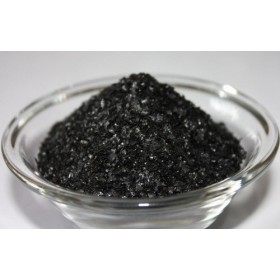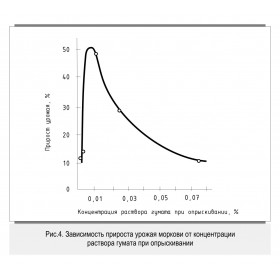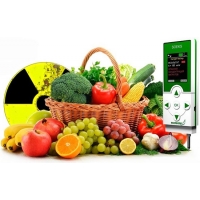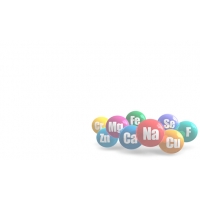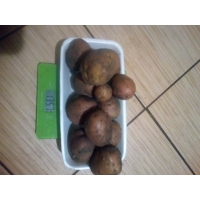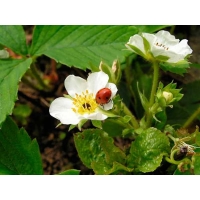Optimized and critical doses of potassic humate and sodic humate
Optimal and critical doses of potassic and sodic humates
If, according to our hypothesis, at the optimal concentration of aqueous solution the best conditions for the humate penetration into plants are created, then the optimal dose is more closely related to the optimal concentration of humate in the intercellular plasma and inside the plant cells.
The results obtained by "Agro.Bio" together with colleagues can be approximately explained as follows: at full wetting power of the leaf the ratio of the given humate solution film thickness on the surface of the leaf to the thickness of the leaf at optimal concentration of the solution should be 1:10 - 1:20 in case of full absorption of this film by leaf. With this ratio, the volume concentration of humate in the intercellular plasma and within the cells will be exactly equal to the value obtained by the NMR method.
Very important to ensure the high humates effectiveness and the correct interpretation of the practical results of their actions is the understanding of the fact that in small doses, they improve nutrition, accelerate the growth and development of plants, increase their resistance to stresses, and in deliberately large – almost always suppress the development of plants.
Between the shortage and the excess of humates, there is always an optimal dose, in which the positive effect of humates is especially strong. The optimal dose corresponds to the consumption at which the maximum effect from the humate collective effect on the plant is observed. This is true for many other growth promoters and nutrients. For example, the perfect rooting compound heteroauxin at a concentration of 0.06 g/l promotes the root system growth of many plants, but at a concentration of 0.6 g/l roots away weeds and leaves of trees, that is, exercises the properties of herbicide. All plowmen well know "lodging" of wheat in places where fertilizers were accidentally scattered and then carelessly removed.
We recommend the optimal one-time dose of 16.5-24 g/ha, based on 100% active substance dry matter, with a four-time treatment during the season, for the foliar fertilization of cereals. At present, considering the increased solar radiation, soil exhaustion and other factors, this dose may not be sufficient and should be increased to 50-80 g/ha, and in some cases - up to 100-500 g/ha.
The optimal dose for different croppers may have significant differences. In addition, humates consumption in foliar application should depend on the method of applying to the plant and the properties of the solution itself. With large droplets, a significant portion of the solution can drain to the ground, and with very fine spraying part of the solution can evaporate without reaching the leaves, or be carried away by the wind.
The optimal doses of soil dressing with humate in dry matter or during irrigation are both defined from a perspective of plants and soil microorganisms' life support and the maintenance of the soil natural soil consistency.
After analyzing of more than three dozen of humic preparations advertising banners posted online, we've tried to make some generalizations on the proposed dosages. Unfortunately, most of the banners did not contain complete information, as neither the content of the active substance, nor the dose was specified. However, according to 9 banners data, it was possible to obtain the necessary figures. All received information is given in terms of 100% of active substance, and doses – are in kg/ha. It emerged that the recommended doses differ by ten folds: for foliar application from 0.17 to 3.4 kg/ha, for root nutrition from 1.12 to 12 kg/ha.
Critical doses in practice correspond to consumptions under which the limits between the appearance of a statistically significant positive effect (lower critical dose) and the beginning of plant growth and development inhibition (upper critical dose) are noted.
The optimum content of humate in the soil, under which the plant respiration is intensified and significantly exceeds the control, and the upper limit of the critical dose, the excess of which leads to deterioration of respiration, are determined. According to the author's data, the optimal dose was 250 mg/l of soil, and the critical dose – 350 mg/l. In terms of active ingredient, these doses correspond to 60 and 85 mg/l of soil. Unfortunately, these data did not allow the lower critical dose determining. Our own observations indicate the value of the lower critical dose of 30 mg/l in terms of active ingredient. In the explanation of these data it should be assumed that the optimal and critical doses of humic substances introduced into the soil can vary greatly depending on the type and composition of the soil, and therefore each time should be identified experimentally. In addition, plant respiration is only one of the 16 factors of the positive effect of humates, and the soil dressing – just one way to ensure the impact of humates on the system "soil-plant".
To calculate the volume of the optimum and critical dose of humates obtained above on the one hectare surface of the soil, it is necessary to introduce the model of humate penetration from the surface depthward into the soil or a model of mechanical mixing of humate with the soil (for example, at plowing). In particular, based on the above data, the optimal dose of approximately 90 kg/ha, the lower and upper critical doses of 30 and 120 kg/ha respectively, are obtained in the assumption of a uniform concentration of humate in the volume of soil at a depth of 0.2 m.
In fact, a certain amount of humus substances is already present in most soil types, thus not the whole indicated dose should be applied, but only the missing difference. Therefore, optimal (or sufficient) doses of soil dressing with humates can be significantly lower and according to our data are in the range of 2-25 kg/ha. For soils rich with humus (6% and more), the dose of humates applied is in the range of 2-5 kg/ha, for soils with a content of humus 5-6% - 5-8 kg/ha, 3-5% - 10-12 kg/ha, less than 3% - 12-25 kg/ha.
If completing the experimental curves А.V. Trusevich to the zero level of the content of humate added to the soil, then we, as in the case of the concentration of solution, will again come to a clearly expressed maximum, to the right and to the left of which the result of the humate effect will be much worse.
When applying humate in dry matter to dress the soil (powder or granules) or when watering, and also due to uneven mixing by volume of soil, there may be a problem of its localized concentrations and a model of its migration from zones of increased local concentration to zones with insufficient concentration will be required.
The above mentioned optimal doses for foliar application and for soil dressing differ from each other, at least a hundredfold. Such a large difference is caused by various targets, different mechanism of humates action and various schemes of its absorption by plants. This determines the choice of treatment technology, both for soil and plants. In particular, it is most reasonable to combine the soil dressing with humates with other types of soil preparation. The most convenient way – is the joint application of humates with mineral fertilizers. Below, in a special section, we will show that the application of such mixtures in addition to soil conditioning has several important advantages. In this case, humic preparations should be made with special requirements - the size of the particles should correspond to the granules of mineral fertilizers size, and their strength should allow such a mixing without crushing of particles.
If it is provided by technology, under foliar treatment humates are applied when watering plants, or combined with treatment with pesticides.
List of articles for the category from the blog Minor-nutrient elements
Articles list
Ukraine has an agrarian orientation of the economy and, in the modern context, one of the most perspective areas for agriculture is the use of organic products, based on the application of purely natural components, that the company AGRO.BIO manufactures and offers – concentrated liquid POTASSIC HUMATE, which helps to restore the natural components of the main active environment – the soil – rationally and effectively.
The soil environment does not always contain the enough amounts of nutrients necessary for plant growth and development, but this disadvantage can be improved by additional fertilization, in particular with POTASSIC HUMATE BALLASTLESS made of LEONARDITE produced by AGRO.BIO. It is an ecologically safe multi-nutrient fertilizer and growth stimulator of organic origin for agricultural plants promoting the increase of soil fertility.
In order to make it easier for you to get an understanding of our products, the articles about potassium humate and multicomplexes are uploaded below.
 English
English Українська
Українська Русский
Русский Espanol
Espanol French
French عربي
عربي
